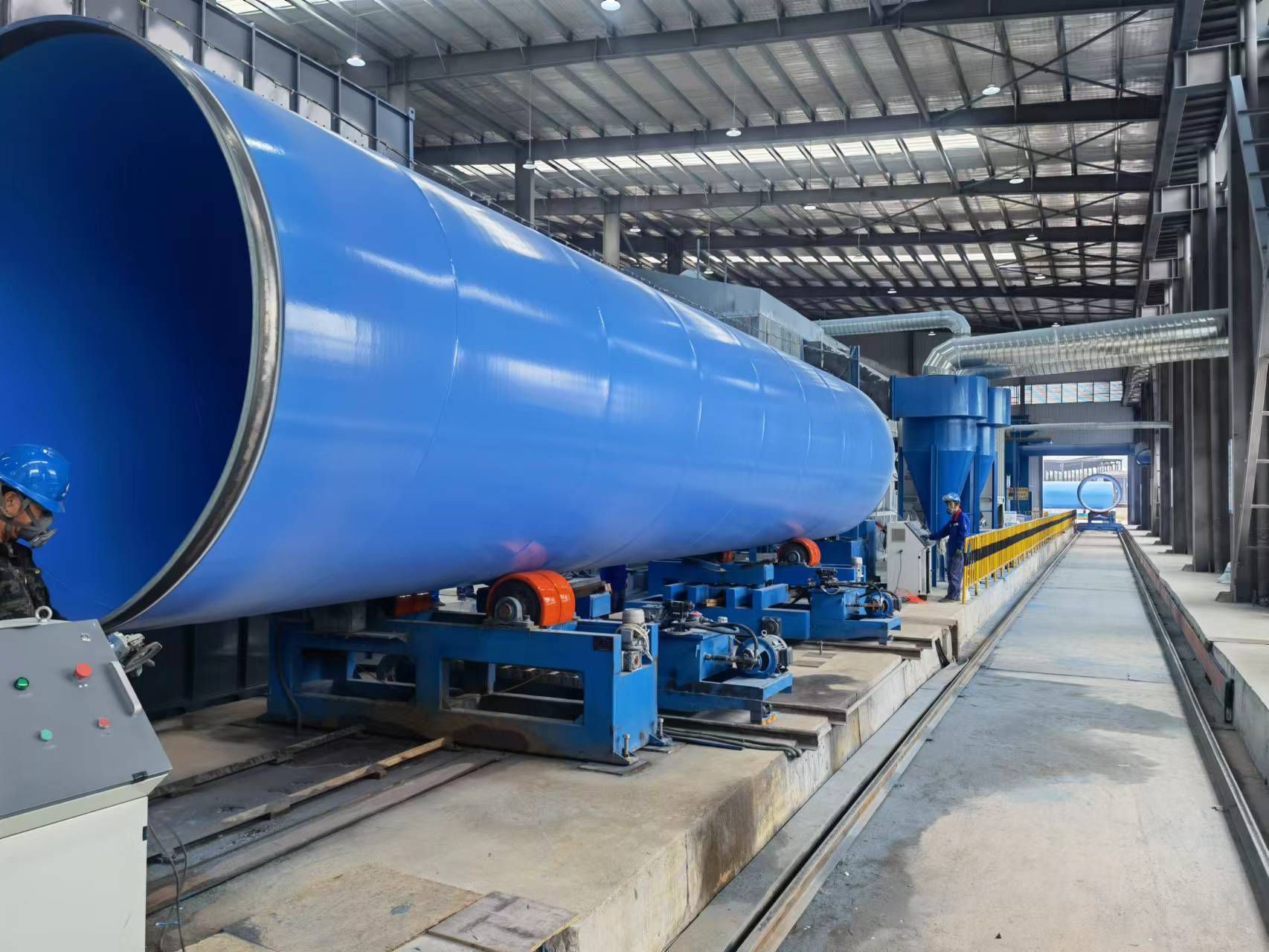The most commonly used anti-corrosion coating for pipelines is epoxy coal tar paint, especially for the protection of underground buried pipelines. For the protection of the inner wall of pipelines, it is necessary to choose a suitable anti-corrosion paint based on the purpose of the pipeline. There are many types of pipelines, such as steam pipelines, oil pipelines, sewage pipelines, etc. Among them, epoxy coal tar paint is widely used in sewage engineering. When coating steel pipes, we often refer to a few coats of oil, including one coat of two oil, three coats of two oil, five steps of three oil, and seven coats of four oil. Epoxy coal tar pitch primer is mainly made of epoxy resin and coal tar pitch as the main film-forming materials, adding various rust resistant pigments, insulation fillers, toughening agents, leveling agents, diluents, anti settling agents, etc.

Painting construction steps for the inner wall of the pipeline: substrate sandblasting treatment -1 layer of epoxy coal tar primer -2 layers of epoxy coal tar primer -1 layer of epoxy coal tar topcoat -2 layers of epoxy coal tar topcoat - project acceptance
1. Base material sandblasting treatment
Firstly, remove the oil stains on the inner wall surface. Solvent, acid solution, etc. can be used to clean and remove the oil, and then rinse with clean water to remove residual solvents.
After the oil removal is completed, sandblasting is used to remove the oxide skin, rust, impurities, etc. on the surface of the substrate, which must meet the Swedish Sa2.5 standard. White iron is exposed, and compressed air is used to blow the dust away. After sandblasting, the steel surface should be coated with primer within 4-6 hours to avoid re rusting of the steel.
2. Epoxy coal tar primer coating
Two coats of air spraying method are required, and one coat of high-pressure airless spraying method is sufficient. Both methods can be selected according to the construction situation to achieve the specified film thickness. Recommended Primer Coating 150 μ m. The surface is free from sagging, pinholes, and bubbles. After drying for 16 hours (23 ℃), the epoxy coal tar primer reaches solid dry and can be coated with a topcoat.
3. Epoxy coal tar topcoat coating
Two coats of air spraying method are required, and one coat of high-pressure airless spraying method is sufficient. Both methods can be selected according to the construction situation to achieve the specified film thickness. Recommended Primer Coating 150 μ m. The surface is free from sagging, pinholes, and bubbles. After drying for 16 hours (23 ℃), the epoxy coal tar paint reaches solid drying.
4. Project acceptance
After the coating of the inner wall of the pipeline is completed, a coating inspection is carried out to ensure that the specified paint film thickness is achieved, and the paint film is free from sags, holidays, and pinholes. The surface is smooth and flat.
Epoxy coal asphalt pipeline anti-corrosion
The anti-corrosion steel pipes include the existing asphalt paint anti-corrosion steel pipes and epoxy paint anti-corrosion steel pipes. The characteristics and characteristics of anti-corrosion steel pipes have great advantages in construction and practical needs. However, there are still serious drawbacks when using epoxy coal tar coating for external anti-corrosion of pipelines.
(1) When used on the surface of steel pipes for corrosion protection, the current technical standards require the anti-corrosion structure to be coated with multiple layers of paint, wrapped with glass fiber cloth in the middle, and solidified to form a "fiberglass" composite structure. Not only is the construction process complex and cumbersome, but to ensure the final quality of the coating, it is also required that the previous coating be cured before the subsequent coating can be applied, which causes inconvenience to construction management due to prolonged construction time, Especially in winter, the longer curing time exacerbates the difficulties.
(2) When using glass cloth, a large amount of fine glass fiber fibers are generated, which can easily penetrate the skin, cause unbearable pain, and may harm the health of construction workers through breathing or eating.
(3) Although the coating is a thick paste type, it still contains volatile solvents, which will be completely released into the air during the curing process after application, and still does not meet the increasingly strict environmental protection requirements.
Several points to pay attention to during the construction process of epoxy coal tar paint
The relative humidity of the air is less than 75%, and the substrate temperature is 3 ℃ higher than the dew point.
Epoxy coal tar asphalt paint and curing agent are strictly added in proportion and used up during the specified curing period. If the paint solidifies, it cannot be used.
The recommended paint film thickness is 300 μ Above m, it can have better protection and anti-corrosion effect in the sewage immersion area.
During the spraying period, it is necessary to ensure good ventilation inside the pipeline, ensure the safety of construction personnel, and avoid open flames on site.
After the construction is completed, the pipeline needs to be left for 7 days to completely evaporate the solvent in the paint film and achieve complete drying. During this period, the paint film should avoid contact with water, solvents, and bumps.